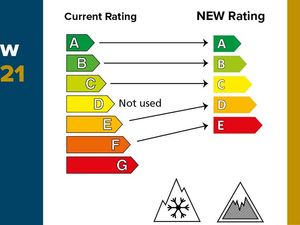The new tyre labelling system explained
Labels have been simplified and made available digitally.

Tyres are arguably the most important aspect of your car, as they’re the only things connecting you with the road.
However, according to a survey by the European Tyre and Rubber Manufacturers’ Association, just one per cent of tyres on sale have the highest rating for both efficiency and wet grip.
Although there could be many reasons why low numbers of high-performing tyres are being sold, it’s perhaps no surprise that tyre labelling is getting an overhaul.

Road safety charity TyreSafe explains that these labels are designed to give consumers information about the quality of the tyre, with ratings for fuel efficiency, braking performance in the wet and tyre noise.
These are fixed to tyres before being purchased, but customers in garages rarely see them as they’ll often pick the tyre based on price, with staff often unable to show them the ratings on their computer.
Under new rules that come into play on May 1, not only have the labels been simplified, but they’re also being made available digitally so customers have easy access, while retailers are obliged to provide the information.
The new labels have the same core information mentioned above as the old one, with each area given its own rating. However, the number of ratings have been reduced from A-G to A-E, while a mountain symbol now denotes tyres suitable for snow. The tyre noise section now has an A-C rating, too, to help give context to the decibel figure.
Stuart Jackson, TyreSafe chairman, said: “The key point of tyre labelling is to help those choosing a tyre to make an informed decision. There is concern that owners typically only consider cost and don’t appreciate there may be tyres that are more suitable and offer better value but perhaps at a higher price.
“It’s in the interest of vehicle owners to make themselves aware of the information contained on the new tyre label to cut costs in fuel, as well as improve their safety.”





